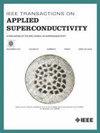Development of SQUID Array Amplifiers for the LiteBIRD CMB Satellite
IF 1.7
3区 物理与天体物理
Q3 ENGINEERING, ELECTRICAL & ELECTRONIC
引用次数: 0
Abstract
LiteBIRD is an upcoming JAXA-led mission that aims to measure primordial gravitational waves in the B-mode polarization of the cosmic microwave background. It is set to launch in 2032. The LiteBIRD detector array consists of around 5000 TES detectors which are read out using digital frequency multiplexing over a bandwidth of 1-6 MHz. The multiplexing factor ranges from 58x to 68x. We are presently developing single-stage SQUID array amplifiers for LiteBIRD readout. Due to the reduced complexity and cost, and greater heritage from ground-based experiments such as the South Pole Telescope and Simons Array, single-stage SQUID array amplification is preferable for the first-stage amplification, as long as it can meet the requirements. The LiteBIRD single-stage SQUID Array is required to have high transimpedance amplification while maintaining a low input inductance and low dynamic resistance. In addition, the input-referred current noise must be very low, and the power dissipation must remain below about 100 nW. These requirements have non-trivial interactions. To maximize performance within these requirements we have performed lumped-element SQUID simulation. We find that by optimizing SQUID internal damping elements and inductive loading, good single-stage SQUID array performance can be obtained for LiteBIRD, including significant engineering margin.求助全文
约1分钟内获得全文
求助全文
来源期刊

IEEE Transactions on Applied Superconductivity
工程技术-工程:电子与电气
CiteScore
3.50
自引率
33.30%
发文量
650
审稿时长
2.3 months
期刊介绍:
IEEE Transactions on Applied Superconductivity (TAS) contains articles on the applications of superconductivity and other relevant technology. Electronic applications include analog and digital circuits employing thin films and active devices such as Josephson junctions. Large scale applications include magnets for power applications such as motors and generators, for magnetic resonance, for accelerators, and cable applications such as power transmission.
 求助内容:
求助内容: 应助结果提醒方式:
应助结果提醒方式:


